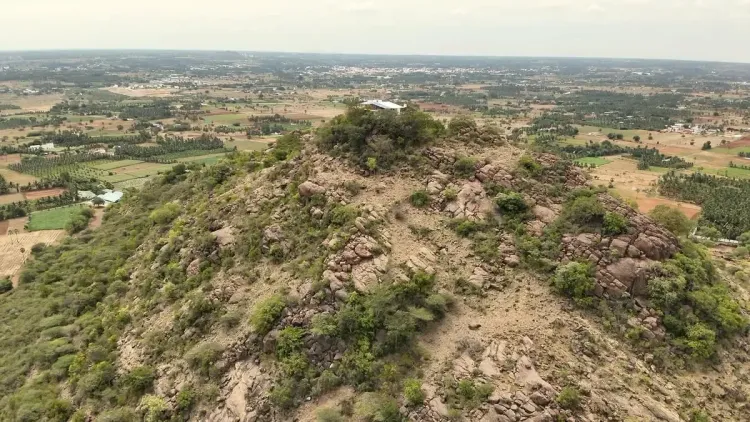Has Nagamalai Hillock in Erode Become TN's Fourth Biodiversity Heritage Site?

Synopsis
Key Takeaways
- Nagamalai Hillock recognized as TN's fourth Biodiversity Heritage Site.
- Home to diverse species including 138 plant and 118 bird species.
- BHS status promotes local community involvement in conservation.
- Site features significant archaeological finds.
- Emphasizes ecological sustainability and cultural heritage.
Chennai, Oct 8 (NationPress) In a significant advancement for conservation initiatives, the Tamil Nadu government has officially designated Nagamalai Hillock in Erode district as the state’s fourth Biodiversity Heritage Site (BHS).
This ecologically diverse hillock is home to 138 species of plants, 118 species of birds, seven mammals, 11 reptiles, five spiders, and 71 varieties of insects, making it an essential natural habitat.
With this declaration, Nagamalai joins the increasing list of protected ecological sites in the state.
The sites previously recognized include Arittapatti in Madurai, which received BHS status in November 2022, followed by Kasampatti in Dindigul in March 2025 and Elathur Lake in Salem in August 2025.
According to Additional Chief Secretary for Environment, Climate Change, and Forest, Supriya Sahu, "Biodiversity Heritage Sites are ecologically important locations that foster unique and delicate ecosystems. They protect rare and threatened species, maintain evolutionary significance, and strengthen cultural connections with nature."
She further noted, "The recognition as a BHS instills a sense of pride in local communities, bolsters conservation ethics, and ensures the continuation of traditional livelihoods alongside ecological sustainability."
Officials clarified that the BHS status does not limit traditional or customary practices of local communities but rather seeks to enhance ecological stability and improve quality of life while safeguarding delicate ecosystems.
Nagamalai Hillock is recognized as an ecological hotspot due to its diverse landscape, which includes deep water pockets, shallow margins, mudflats, and rocky outcrops. It serves as a crucial sanctuary for both migratory and resident birds, featuring flagship raptor species such as the Greater Spotted Eagle, Pallid Harrier, and Benelli’s Eagle.
The wetland ecosystems also support a rich array of aquatic species.
In addition to its natural abundance, the site holds profound historical and cultural significance. Archaeological discoveries include cairn circles from the Iron Age, ancient rock shelters, and artifacts indicating early human habitation. A 400-year-old stone carving of Lord Anjaneya, recognized by the Archaeology Department, underscores its cultural heritage.
Local support for this initiative has been robust.
The Elathur Town Panchayat passed a resolution earlier this year endorsing the BHS designation, paving the way for this declaration. Officials mentioned that this recognition will facilitate the conservation of this unique habitat while involving local residents in protective activities, merging heritage with ecology to sustain both biodiversity and cultural identity.









